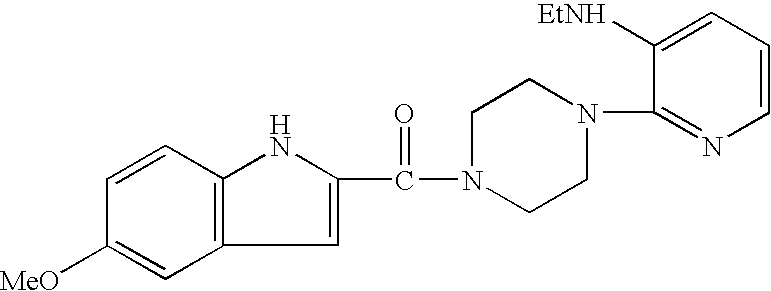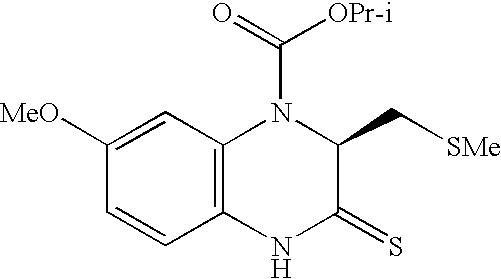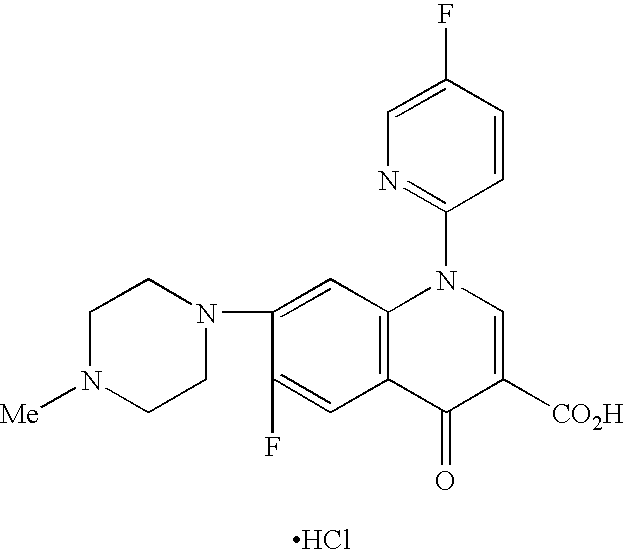Identification and use of effectors and allosteric molecules for the alteration of gene expression
a technology applied in the field of identification and use of effectors and allosteric molecules for the alteration of gene expression, can solve the problems of destroying the ability of rna to direct synthesis of encoded proteins, embryonic lethality, and certain disruptions of gene function that cannot be studied in a viable animal, so as to reduce the utility of targeted gene disruption, eliminate the target gene product, and restrict the effect of target gene disruption
- Summary
- Abstract
- Description
- Claims
- Application Information
AI Technical Summary
Benefits of technology
Problems solved by technology
Method used
Image
Examples
example 1
Effector Identification
[0216] A method for identifying an effector for use in the evolution of aptamers and the alteration of gene expression involves the following steps. The first step is the selection a set of desired characteristics for an effector, wherein the desired characteristics include one or more of the following: [0217] a) at least 1% bioavailability; [0218] b) biodistribution to tissue containing an allosteric control module; [0219] c) the ability to pass to the nucleus of the cell; [0220] d) either no drug interactions or manageable drug interactions; [0221] e) either no toxicity or acceptable toxicity at the dosage range used; [0222] f) either no side effects or acceptable side effects at the dosage range used; [0223] g) either no pharmacological effect at the dosage range used in regulating transgene expression or a negligible pharmacological effect; and [0224] h) physical properties suitable for the in vitro evolution of an aptamer.
The selected characteristics i...
example 2
In Vitro Evolution
[0232] An exemplary in vitro evolution strategy is described as follows. A random pool of nucleic acids is synthesized wherein, each member contains two portions: a) one portion consists of a region with a defined (known) nucleotide sequence; b) the second portion consists of a region with a degenerate (random) sequence. The known nucleotide sequences may provide several advantages / uses. For example, a certain nucleotide sequence may be known or expected to bind to a given effector. Alternatively, the known sequence may facilitate or provide for complementary DNA (cDNA) synthesis and PCR amplification of molecules selected for their effector binding. In yet another aspect, the sequences may be used to introduce a restriction endonuclease site for the purpose of cloning. The random sequence can be created to be completely random (each of the four nucleotides represented at every position within the random region) or the degeneracy can be partial (Beaudry and Joyce,...
example 3
Allosteric Control Module
[0241] The allosteric control module contains a catalytic domain and an aptamer, evolved as described above, that is selected such that the interaction of the aptamer with an effector alters the activity of the allosteric control module. The interaction of the effector and aptamer may result in an alteration of the catalytic activity of the catalytic domain. Depending upon the selection of the components, the alteration can result in either an increase or a decrease in the activity of the catalytic domain of the module.
[0242] Ribozymes, ribozyme-like molecules and portions of such molecules are used to form the catalytic domains of the present invention. Ribozymes which are useful in the present invention include, but are not limited to, molecules in the classes of hammerhead, axehead, hairpin, hepatitis delta virus, neurospora, self-splicing introns (including group I and group II), newt satellite ribozymes, Tetrahymena ribozymes, ligases, peptide ligases...
PUM
| Property | Measurement | Unit |
|---|---|---|
| Fraction | aaaaa | aaaaa |
| Catalytic activity | aaaaa | aaaaa |
| Gene expression profile | aaaaa | aaaaa |
Abstract
Description
Claims
Application Information
 Login to View More
Login to View More - R&D
- Intellectual Property
- Life Sciences
- Materials
- Tech Scout
- Unparalleled Data Quality
- Higher Quality Content
- 60% Fewer Hallucinations
Browse by: Latest US Patents, China's latest patents, Technical Efficacy Thesaurus, Application Domain, Technology Topic, Popular Technical Reports.
© 2025 PatSnap. All rights reserved.Legal|Privacy policy|Modern Slavery Act Transparency Statement|Sitemap|About US| Contact US: help@patsnap.com



